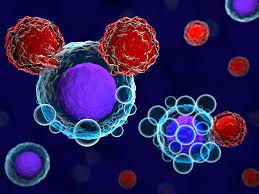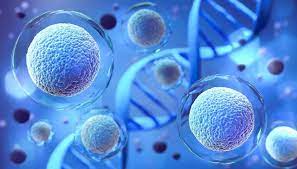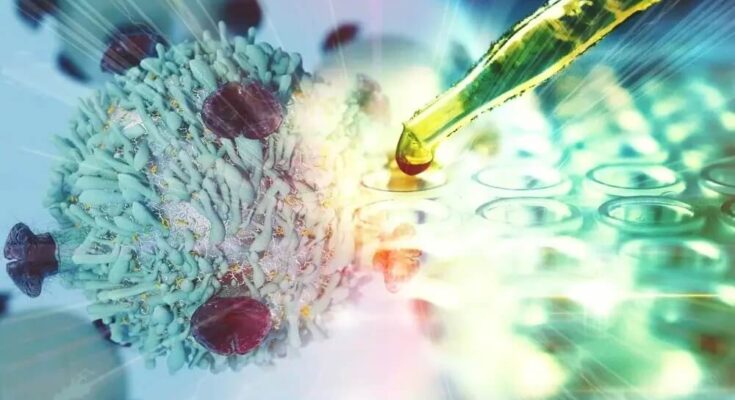In recent years, the field of cell therapy has emerged as a groundbreaking area of medical research and treatment. With the potential to revolutionize medicine as we know it, cell therapy technologies offer hope for patients with previously untreatable conditions. In this article, we will delve into the world of cell therapy technologies, exploring their potential, advancements, and impact on the future of healthcare.
What is Cell Therapy?
Cell therapy involves the use of living cells to treat, repair, or replace damaged tissues or organs in the human body. These cells can be sourced from various origins, such as the patient’s own body (autologous), a donor (allogeneic), or even engineered in a laboratory (gene-edited cells). The goal of cell therapy is to harness the regenerative properties of cells to restore normal function and improve the quality of life for patients.
Advancements in Cell Therapy Technologies
Over the years, significant advancements have been made in cell therapy technologies. One notable breakthrough is the development of induced pluripotent stem cells (iPSCs). These cells, derived from adult tissues, can be reprogrammed to possess the ability to differentiate into various cell types. iPSCs offer immense potential for personalized medicine, as they can be generated from a patient’s own cells, minimizing the risk of rejection.

Additionally, the advent of gene-editing technologies, such as CRISPR-Cas9, has opened up new possibilities for precision medicine in cell therapy. Researchers can now precisely modify the genetic material of cells, enhancing their therapeutic potential and addressing genetic disorders at their root cause.
Applications and Benefits of Cell Therapy
Cell therapy technologies have shown promising results in a wide range of medical conditions, including cancer, cardiovascular diseases, neurological disorders, and autoimmune diseases. For example, in cancer treatment, immune cell-based therapies, such as CAR-T cell therapy, have demonstrated remarkable success in targeting and eliminating cancer cells.
Moreover, cell therapy offers several advantages over traditional treatment methods. It has the potential to provide long-lasting or permanent solutions, reduce the need for repeated interventions, and minimize the risk of adverse effects. By harnessing the body’s own regenerative capabilities, cell therapy promotes natural healing processes and enhances patient outcomes.
Challenges and Future Outlook
Despite the immense promise of cell therapy technologies, several challenges need to be addressed for their widespread adoption. These include optimizing manufacturing processes, ensuring quality control, establishing regulatory frameworks, and addressing ethical considerations. Collaborative efforts between researchers, clinicians, regulatory bodies, and industry stakeholders are crucial to overcome these challenges and pave the way for safe and effective cell therapies.
Newly-released cell therapy technologies industry analysis report by Fact.MR reveals that global sales in 2022 were held at US$ 4.5 Billion.
It covers Key Drivers Influencing the Market Expansion & various competitve analysis
Looking ahead, the future of cell therapy technologies appears bright. Ongoing research and clinical trials continue to uncover new therapeutic applications and refine existing treatments. As technology advances and our understanding of cell biology deepens, personalized and targeted cell therapies are expected to become more accessible and affordable, transforming the landscape of healthcare.
What are the Different Types of Cell Therapy?
Cell therapy encompasses various approaches and types, each tailored to address specific medical conditions and therapeutic goals.

Here are some of the different types of cell therapy:
1. Stem Cell Therapy: Stem cells have the remarkable ability to differentiate into different cell types within the body. Stem cell therapy involves the transplantation or injection of stem cells into damaged tissues or organs to promote regeneration and repair. This therapy holds potential for treating conditions such as cardiovascular diseases, neurodegenerative disorders, and spinal cord injuries.
2. CAR-T Cell Therapy: Chimeric Antigen Receptor T-cell (CAR-T) therapy is a type of immunotherapy that involves modifying a patient’s own T cells to express a receptor that targets specific cancer cells. These modified T cells are then infused back into the patient, where they selectively recognize and destroy cancer cells. CAR-T cell therapy has shown remarkable success in treating certain types of blood cancers, such as leukemia and lymphoma.
3. Mesenchymal Stem Cell Therapy: Mesenchymal stem cells (MSCs) are a type of adult stem cell found in various tissues, including bone marrow and adipose tissue. MSC therapy involves the administration of these cells to modulate the immune response, reduce inflammation, and promote tissue repair. MSC therapy has shown potential in treating conditions such as autoimmune diseases, tissue injuries, and graft-versus-host disease (GVHD).
4. Gene Therapy: Gene therapy involves the introduction of genetic material into a patient’s cells to correct or modify a defective gene responsible for a particular disease. This therapy can be used to replace a faulty gene, introduce a new gene, or regulate gene expression. Gene therapy holds promise for treating genetic disorders, inherited conditions, and certain types of cancers.
5. Tissue Engineering: Tissue engineering combines cells, scaffolds, and growth factors to create functional three-dimensional tissues or organs in the laboratory. These engineered tissues can be used to replace damaged or diseased tissues in the body. Tissue engineering approaches have been explored for applications such as skin grafts, cartilage repair, and organ transplantation.
6. Cord Blood Cell Therapy: Umbilical cord blood contains a rich source of hematopoietic stem cells (HSCs) that can differentiate into various blood cell types. Cord blood cell therapy involves using these HSCs for transplantation in the treatment of blood disorders, immune deficiencies, and certain types of cancer. Cord blood banking allows for the collection and preservation of cord blood for future therapeutic use.
It is important to note that the availability and appropriateness of these cell therapy types may vary depending on the specific medical condition, patient characteristics, and regulatory guidelines in different regions. The field of cell therapy is continuously evolving, with ongoing research and clinical trials expanding the range of therapeutic possibilities and refining existing approaches.
Conclusion
Cell therapy technologies hold immense promise for revolutionizing medicine and improving patient outcomes. With their potential to repair and regenerate damaged tissues, these therapies offer hope for patients with previously incurable conditions. As the field continues to evolve, it is imperative that we foster collaboration, invest in research, and address the challenges ahead to unlock the full potential of cell therapy for a better future.
Also Read:
2. Unraveling the Science Behind Animal Vaccines and their Vital Role in Disease Prevention



